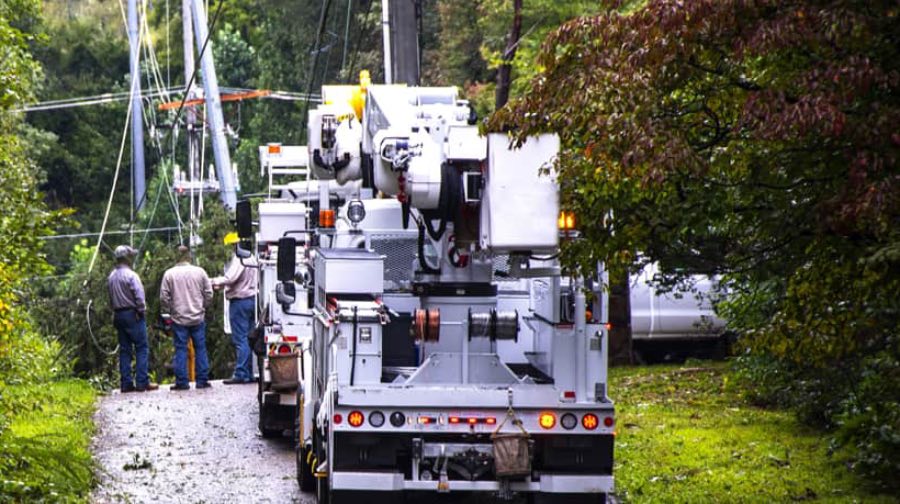
Before the advent of FirstNet over AT&T’s dedicated broadband cellular network, land mobile radio (LMR) was the go-to communications system for first responder agencies. Now that FirstNet is here, many of its users are wondering what can be done with their existing LMR assets. Should they just shut them down and try to sell them off — assuming anyone still wants limited bandwidth two-way radios in 2023? Or are there still useful roles that LMR systems can fulfill before they age out and are taken out of service?
Based on what the experts tell us, here’s what we can tell you.
Where LMR Still Has a Role
There are two ways in which a department’s LMR, as a function/service, can still be useful in today’s FirstNet communications world.
First, LMR can be used in the very worst of environmental conditions where equipment damage due to climate and handling are real risks. This is because some LMR portable devices are intrinsically safe and built to rugged specifications that meet NFPA (National Fire Protection Association) specifications for water immersion and hazardous environments. This being said, some FirstNet Mission Critical Push to Talk solutions (MCPTT) devices are also built to military specifications and IP ratings that can protect these devices from hazards in the workplace. But they may be rated to a level lower than NFPA-approved LMR portables. The cost of these devices is commensurate with their intrinsic protections.
Second, LMR devices continue to support “direct mode” or “off network” capabilities for coverage in the absence of LMR network connectivity, which allows them to connect to each other in a ‘radio-to-radio” configuration. Smartphones and tablets cannot do this today but new device to device technologies are being developed within the 3GPP standards process to enable device-to-device integration. Further information as to the viability of those capabilities to first responders will be available as those features mature.
What FirstNet Takes Over From LMR
Range and coverage are key concerns for LMR users, even at agencies with sophisticated networks of main towers and repeaters. This is where FirstNet MCPTT’s wide area (Nationwide Network) coverage makes a real difference. FirstNet-enabled devices can be employed by responders when a user travels outside their coverage area when transferring a prisoner, or when an ambulance transports a patient outside of the user’s jurisdiction. As a single nationwide network, FirstNet doesn’t have the inherent jurisdictional and geographical coverage limitations as LMR systems do.
Since FirstNet MCPTT solutions have access to an expanded FirstNet coverage footprint that LMR might not have access to, a FirstNet user can leverage AT&T’s coverage in areas where LMR coverage doesn’t exist. This results in expanded capabilities and coverage for users compared to solely using LMR — along with the many broadband, imaging and multimedia capabilities supported by FirstNet.
What They Can Do Together
When FirstNet MCPTT solutions are integrated with LMR to enable channels/talkgroups that use both PTT platforms, users inherently have access to a deeper toolbox that can provide better communications support and PTT opportunity. With each solution operating within its own coverage footprint, the user has access to a more resilient combined PTT solution.
As well, a first responder agency can create a common communications platform that shares calls between FirstNet and LMR. For example, hybrid LMR devices such as the L3Harris XL-200 can serve as radios while using FirstNet’s FNPTT (FirstNet Push-to-Talk) capabilities. According to Urgent Communications magazine, the Mammoth Lake (Calif.) Fire Protection District has incorporated LTE PTT into their LMR operations using L3Harris hybrid devices. With these devices the department can access existing VHF conventional LMR repeaters along with FNPTT. They also utilize a Radio over IP kit to support communicating LMR users from LTE devices.
That’s not all. If a user operates their hybrid device on their department’s LMR trunked radio system, they can use the FNPTT/LTE functionality inherent in this device to connect to the FirstNet network as well — leading to the hybrid device offering the user the best solution (P25 PTT vs FirstNet PTT) in their current situation. In time, the user may not have to migrate between networks. Instead, the networks would just allow the user to push the PTT button to get access to the best coverage experience on either network in that location, at that specific time.
Of course, hybrid LMR devices are more expensive than wireless-enabled smartphones and tablets, but they do offer a transitional experience between trunked LMR and FirstNet MCPTT solutions. Today, different LMR vendors handle their devices’ ability to migrate between LMR and FirstNet differently. Still, there is no doubt that the use of such dual mode devices will be an important part of the ongoing LMR to LTE transition.
In fact, the first bridging between FirstNet PTT and LMR systems has already begun with dual mode/hybrid devices and Radio over IP solutions that provide raw audio between LMR and FirstNet devices. More effective network interfaces, such as the Mission Critical Inter-Working Function (IWF)IWF) will eventually be introduced that will allow for FirstNet devices to interconnect with LMR devices more “eloquently” –- meaning the interconnection will support high performing solutions that retain encryption elements, alias identifiers and other attributes across both platforms.